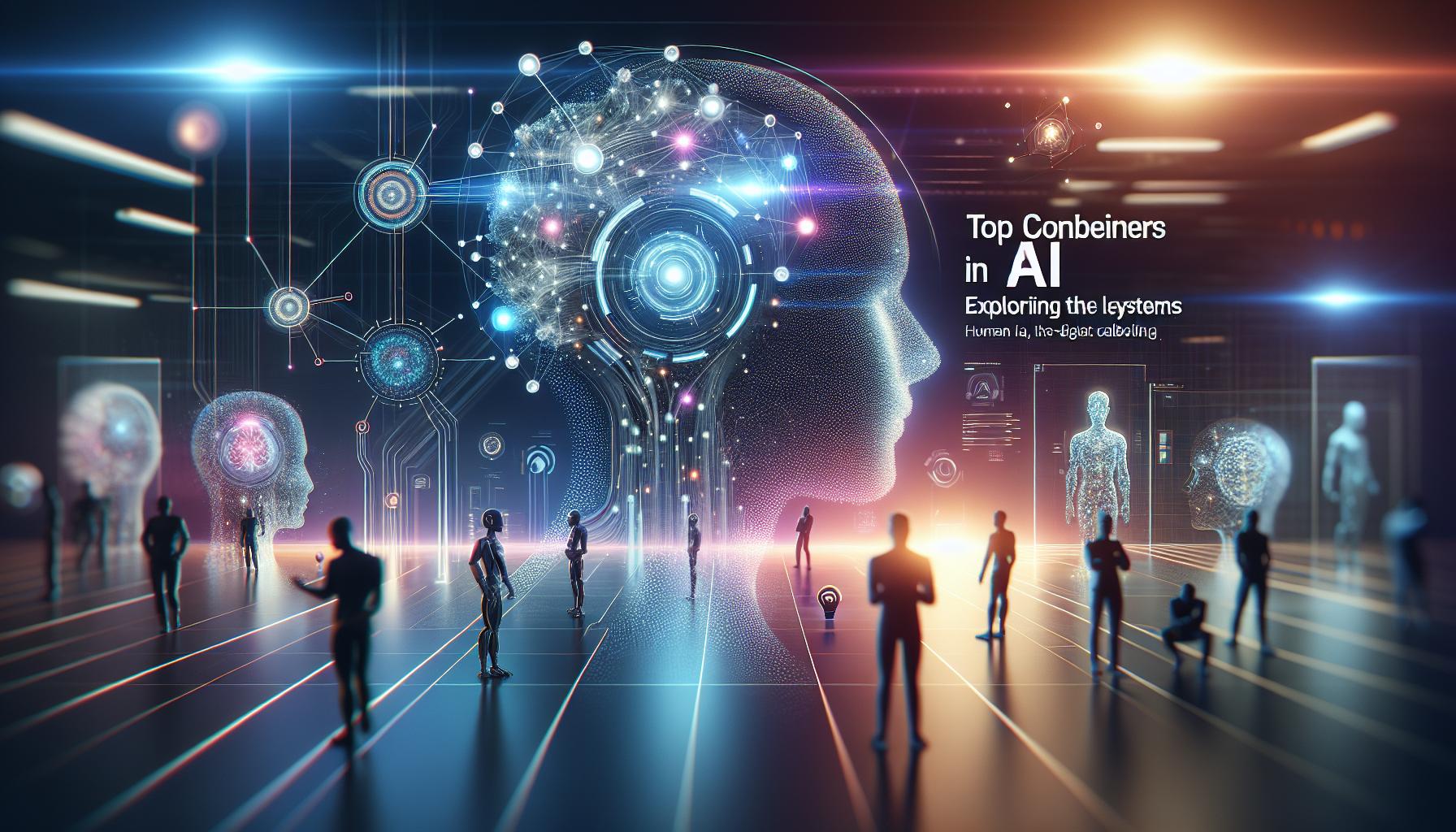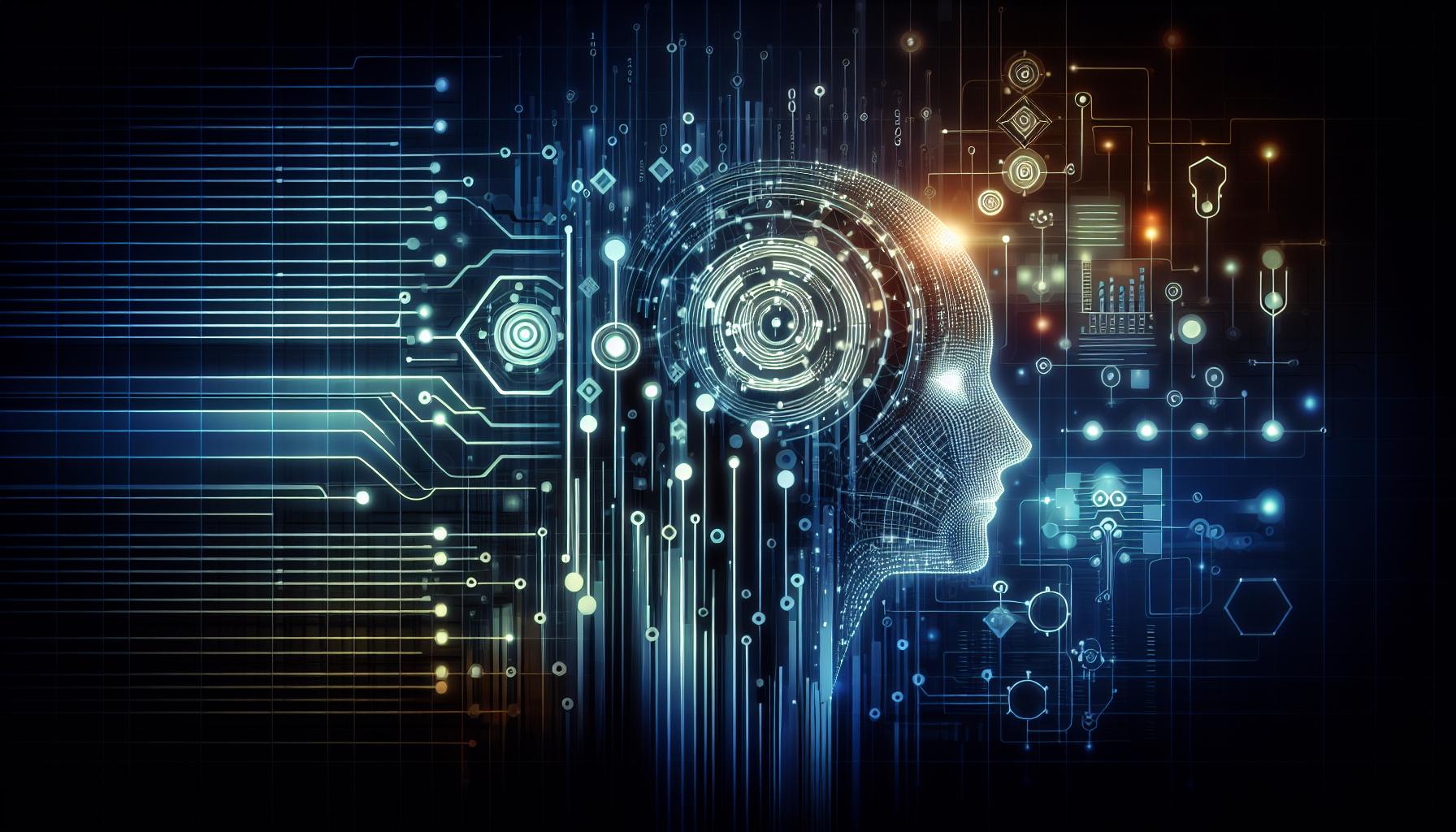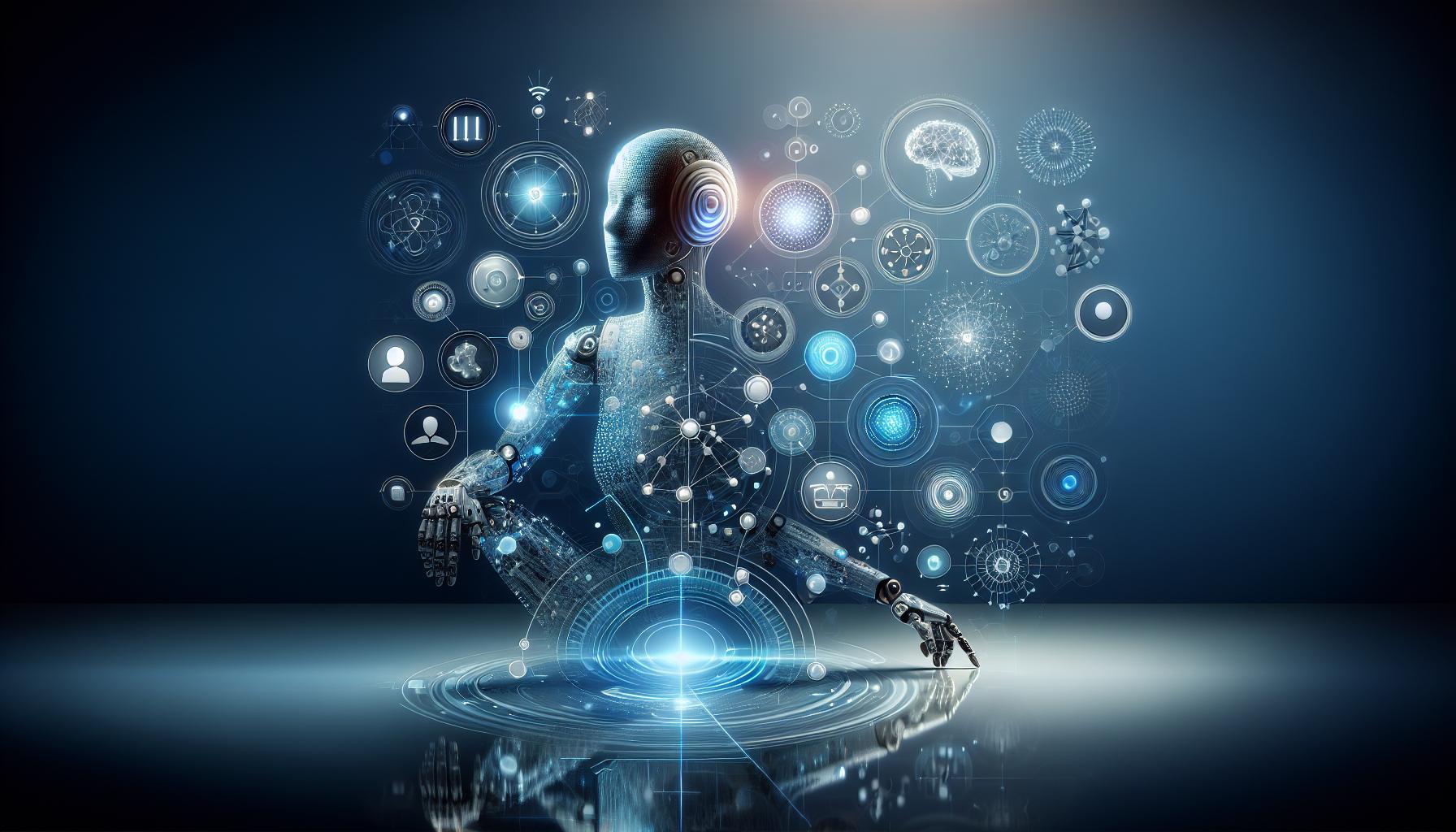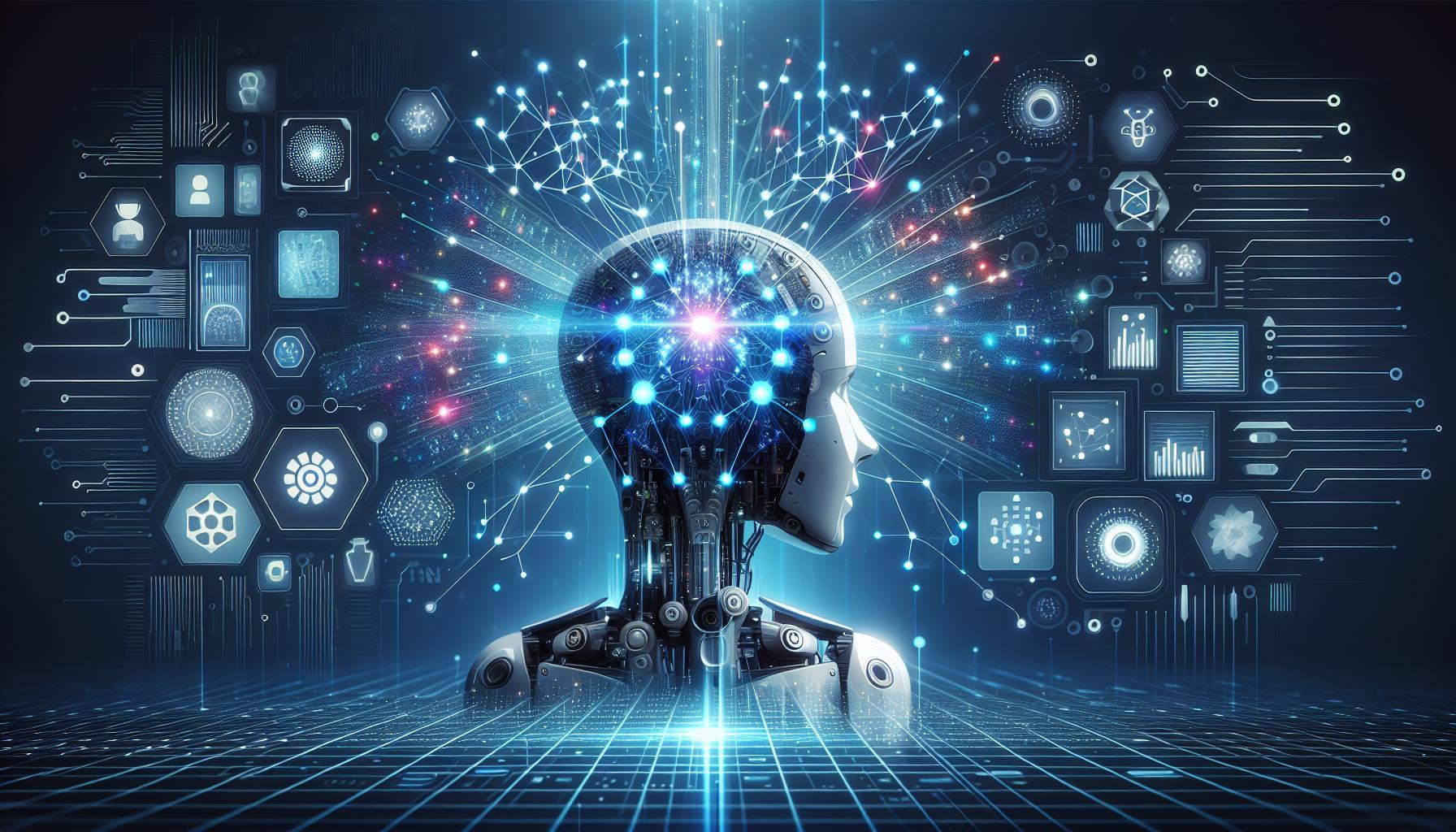As artificial intelligence rapidly evolves, the quest for the most advanced systems has intensified. Understanding which AI stands out not only illuminates technological progress but also highlights its role in transforming our lives. Explore the leading contenders in this race for supremacy, revealing their unique features and capabilities.
Understanding Artificial Intelligence: A Brief Overview

Artificial intelligence (AI) has become a cornerstone of modern technology, transforming industries and redefining the capabilities of machines. The journey into understanding AI begins with recognizing its ability to mimic human cognition, enabling computers and systems to execute tasks that previously relied on human intellect. Today’s AI systems are not just tools; they are complex algorithms that can learn and adapt, providing profound insights and efficiencies across various sectors.
To grasp the enormity of AI, it’s essential to understand its various forms and applications. From natural language processing, which powers virtual assistants like Siri and Alexa, to advanced machine learning models that analyze vast datasets for actionable insights, AI encompasses a broad spectrum of technologies. Here are a few key types of AI:
- Reactive Machines: These systems can react to specific inputs with pre-defined responses but lack memory or learning capabilities.
- Limited Memory: These AI can learn from historical data to make decisions, such as self-driving cars using past observations to navigate safely.
- Theory of Mind: These systems, still in development, aim to understand human emotions and social cues to interact more naturally.
- Self-Aware AI: A hypothetical future form of AI that possesses self-awareness and consciousness.
Through the lens of the article titled “What Is the Smartest AI? Ranking the Top Artificial Intelligence Systems,” we see numerous examples of cutting-edge AI technologies. Leading systems, such as OpenAI’s GPT models and Google’s DeepMind, showcase the capabilities of AI in generating human-like text and mastering complex games like Go, respectively. These advances are not merely academic; they have real-world applications in healthcare, finance, and customer service, where AI-driven analytics can predict patient outcomes, detect fraud, and enhance user experiences.
As industries continue to adopt these intelligent systems, understanding their foundations and operational mechanisms is crucial. Businesses looking to integrate AI into their operations should prioritize defining clear objectives for AI deployment, ensuring robust data governance, and investing in necessary training for their teams. By doing so, they can leverage the full potential of AI, paving the way for innovation while navigating the complexities that come with these powerful tools.
Criteria for Assessing AI Intelligence: What Really Matters
The quest for identifying the most intelligent AI systems isn’t just a matter of ranking them based on raw capabilities; it involves a nuanced understanding of various criteria that contribute to AI intelligence. Defining what constitutes intelligence in artificial systems requires a multi-dimensional evaluation framework that goes beyond simple performance metrics. Here’s an exploration of the critical factors that should be considered when assessing AI intelligence.
Key Factors in Assessing AI Intelligence
When evaluating artificial intelligence, several pivotal factors emerge that help us understand their capabilities and limitations:
- Learning Ability: The capacity of an AI to learn from data, improve over time, and adapt to new information is fundamental. This includes techniques such as supervised learning, unsupervised learning, and reinforcement learning.
- Contextual Understanding: Smart AI systems can comprehend context, allowing them to make informed decisions. For instance, natural language understanding (NLU) enables chatbots to engage users naturally.
- Generalization: The ability to apply learned knowledge to new situations signifies a higher level of intelligence. AI should not just memorize answers but understand principles to tackle different problems.
- Creativity and Originality: Some AI applications, especially those in creative fields like music and art generation, must demonstrate creativity, a more complex trait that signifies a deeper level of intelligence.
- Emotional Intelligence: The capability of an AI to recognize and appropriately respond to human emotions is increasingly important, especially in customer service and therapeutic applications.
Performance Metrics and Benchmarks
The intelligence of artificial systems can also be gauged through various performance metrics. Below are some commonly used benchmarks for assessment:
| Metric | Description | Example AI System |
|---|---|---|
| Accuracy | Measures the correctness of predictions or classifications. | Google’s TensorFlow |
| F1 Score | Balances precision and recall in classification tasks. | OpenAI’s GPT-3 |
| Latency | Time taken to process input and generate output. | Facebook’s PyTorch |
| User Engagement | Quantifies how effectively AI engages users over time. | Amazon Alexa |
By applying these criteria, stakeholders can make more informed decisions when evaluating and comparing the smartest AI systems. The intersection of learning ability, contextual awareness, and creativity among other factors not only shapes the AI’s capabilities but also its adaptability to real-world applications. Understanding these metrics can ultimately guide the development of more intelligent AI systems that serve diverse and complex human needs.
Top Contenders in AI: Exploring the Leading Systems

The advancement of artificial intelligence has evolved remarkably, giving rise to systems that demonstrate human-like cognition and problem-solving abilities. As industries increasingly adopt AI technologies, understanding the leading contenders in the AI landscape becomes crucial for businesses aiming to leverage these innovations effectively.
Key Players in the AI Arena
Several AI systems stand out due to their capabilities, versatility, and application across various sectors. Here’s a closer look at some of the most formidable players in the AI domain:
- OpenAI’s GPT Series: These models excel in natural language processing tasks, enabling conversational AI, content generation, and much more. Their ability to understand context and produce coherent text sets them apart in the realm of smart AI.
- Google DeepMind: Known for its advanced machine learning techniques, particularly in reinforcement learning, DeepMind gained fame for creating algorithms that can play complex games like Go at a superhuman level. Its integration into healthcare research showcases AI’s potential to improve diagnostics.
- IBM Watson: This system is renowned for its analytical capabilities and is widely utilized in industries from healthcare to finance. Watson leverages its natural language processing to assist professionals in decision-making through robust data analysis.
- Baidu’s Ernie: Operating primarily in the Chinese market, Ernie is a significant contender in natural language understanding and generation, rivaling Western counterparts and improving AI’s accessibility to the Chinese-speaking population.
Comparison of Leading AI Systems
To further illustrate the strengths and applicability of these AI systems, the table below showcases key features and use cases:
| AI System | Core Strengths | Typical Use Cases |
|---|---|---|
| OpenAI GPT | Natural language generation and understanding | Chatbots, content creation, language translation |
| Google DeepMind | Reinforcement learning and game strategy | Game-playing AI, healthcare diagnostics |
| IBM Watson | Data analysis and business intelligence | Medical research, customer service optimization |
| Baidu Ernie | Language understanding specific to Chinese | Conversational AI, educational tools |
With advancements in algorithms and computational power, the race for the title of the smartest AI continues to intensify. Companies seeking to integrate AI into their operations should carefully consider the distinct features and benefits of these leading systems, ensuring alignment with their specific goals and challenges. By understanding what is driving the top contenders in AI, businesses can strategically position themselves to harness the power of this transformative technology.
Deep Learning vs. Machine Learning: Decoding the Basics

In the rapidly evolving landscape of artificial intelligence, distinguishing between deep learning and machine learning is crucial for anyone looking to understand the capabilities of various AI systems. Did you know that deep learning, which leverages sophisticated algorithms modeled after the human brain, powers everything from virtual assistants to autonomous vehicles? This powerful subfield is enhancing the intelligent responses observed in the smartest AI systems today.
Machine learning (ML) represents the foundation of AI, focusing on algorithms that learn from data to make predictions or decisions without being explicitly programmed. Through exposure to vast amounts of information, these algorithms improve their performance over time. For instance, image recognition software that uses machine learning can identify objects in photos with remarkable accuracy after processing thousands of images. Machine learning encompasses a variety of techniques, including supervised and unsupervised learning, enabling it to tackle tasks across numerous domains with varying complexity.
| Aspect | Machine Learning | Deep Learning |
|---|---|---|
| Definition | A subset of AI that learns patterns from data. | A subset of ML that uses neural networks. |
| Data Requirement | Works well with smaller data sets. | Requires large data sets for training. |
| Complexity | Handles simpler tasks efficiently. | Excels in complex tasks, like image and speech recognition. |
| Processing Power | Less demanding in terms of computational resources. | Requires significant computing power and specialized hardware. |
Deep learning, on the other hand, goes further by utilizing artificial neural networks (ANNs) that simulate the way humans think and learn. This method allows AI systems to recognize intricate patterns and make decisions based on nuanced data inputs. For example, deep learning has revolutionized fields like natural language processing, enabling AI to understand context in human languages with impressive accuracy. As deep learning continues to develop, its dominance in powering the most sophisticated AI systems highlights its essential role in the journey to uncover what truly defines the smartest AI in the world.
Understanding the differences between these two vital technologies can help you leverage them effectively, whether you’re developing a new AI application or seeking to optimize existing systems. Organizations that harness the right blend of machine learning and deep learning are better positioned to stay ahead in the competitive landscape of artificial intelligence.
Unique Features of the Smartest AI: What Sets Them Apart

The realm of artificial intelligence is continuously evolving, with various systems exhibiting remarkable capabilities that distinguish them in a crowded field. The smartest AIs today are not just advanced algorithms but are crafted with unique features that enhance their usability and effectiveness in real-world applications. These characteristics enable them to deliver sophisticated solutions, adapt to user needs, and integrate seamlessly into diverse environments.
Advanced Natural Language Processing
One defining feature of leading AI systems is their prowess in natural language processing (NLP). This ability allows them to understand, interpret, and generate human language in a way that feels intuitive to users. For example, systems like ChatGPT use state-of-the-art NLP techniques to engage in conversations that are coherent and contextually relevant, making them invaluable for customer service, content creation, and educational tools.
Multi-Modal Capabilities
Another significant aspect that sets top AI systems apart is their multi-modal capabilities. Modern AIs can process and synthesize information from various forms of data, including text, images, and audio. This versatility allows them to perform complex tasks such as image captioning or integrating visual information with textual analysis. Tools like DALL-E exemplify this by generating images from textual descriptions, showcasing the fusion of creativity and technology.
Real-Time Learning and Adaptability
The ability to learn in real-time and adapt to new information is a hallmark of the smartest AIs. Unlike traditional systems that require extensive retraining, these advanced AIs can update their knowledge base dynamically, ensuring that they remain relevant as circumstances change. This is particularly useful in fast-paced industries where staying ahead of trends is essential. For instance, AI-driven analytics platforms can adjust their predictions based on new data inputs, enabling businesses to make informed decisions swiftly.
Personalization and User-Centric Design
Lastly, personalization is a key feature that enhances user interaction with AI systems. By analyzing user behavior and preferences, the smartest AIs can tailor their responses and recommendations, creating a more engaging and effective experience. This is evident in platforms that integrate recommendation engines, providing users with content and solutions that are uniquely suited to their individual needs.
Incorporating these unique features allows the smartest AI systems to transcend traditional boundaries, making them indispensable tools in a variety of domains. Their capacity for understanding human language, processing multiple data types, learning on the fly, and providing personalized experiences truly sets them apart in the ongoing discourse of “What Is the Smartest AI? Ranking the Top Artificial Intelligence Systems.”
Real-World Applications of Advanced AI: Transforming Industries

As industries continue to harness the power of artificial intelligence, the impact of advanced AI systems becomes increasingly profound. These technologies are not merely tools; they are transforming the very fabric of how businesses operate, leading to efficiencies, innovations, and new possibilities that were previously unimaginable. From healthcare to finance, AI systems are redefining traditional methodologies and driving unprecedented success.
Healthcare Revolutionized
In healthcare, advanced AI is making remarkable strides. Machine learning algorithms analyze vast datasets to provide diagnostics that improve patient outcomes. For instance, AI systems can identify patterns in medical imaging faster than human specialists, allowing for earlier intervention in diseases like cancer. The integration of AI diagnostics has proven to reduce operational costs significantly while enhancing the accuracy of patient evaluations. Additionally, AI-driven predictive analytics can forecast patient needs, enabling healthcare providers to allocate resources more efficiently.
Finance Transformation
The financial sector is experiencing a paradigm shift through the implementation of AI technologies. Algorithms now execute trades at lightning speed, analyzing market conditions and executing transactions in milliseconds, which has revolutionized trading strategies. Moreover, AI systems bolster security by detecting fraudulent transactions and anomalies in real time. In credit scoring, alternative data analyzed by AI provides a more comprehensive view of a borrower’s risk, thereby expanding access to financial services for underbanked populations.
Manufacturing and Supply Chain Efficiency
Artificial intelligence is also optimizing operations in manufacturing and supply chains. Predictive maintenance powered by AI can foresee equipment failures before they occur, ensuring minimal downtime and reducing maintenance costs significantly. Robotics, enhanced by AI, not only automate tasks but also learn from their environment, adapting their workflows for increased productivity. This level of efficiency allows companies to respond better to market demands with faster turnaround times and improved product quality.
AI in Customer Experience
Furthermore, personalized customer experiences have become the norm thanks to AI technologies. Intelligent chatbots and virtual assistants handle customer inquiries efficiently and around the clock, ensuring satisfaction and loyalty. These systems use natural language processing to understand and respond to customer queries, providing tailored recommendations based on individual preferences. As a result, businesses that leverage these AI applications witness not only enhanced customer engagement but also improved sales metrics.
In summary, the ongoing advancements in AI technology exemplify the limitless potential for transformation across various sectors. Embracing these innovations enables industries to achieve greater efficiency, improve service delivery, and ultimately drive economic growth. The future prospects of AI as a critical component in business strategy cannot be overstated, suggesting that understanding “What is the smartest AI?” will be crucial for any organization looking to maintain a competitive edge in an increasingly tech-driven landscape.
The Future of AI: Trends to Watch and Innovations on the Horizon
As artificial intelligence continues to evolve at a breakneck pace, the potential applications across various industries are becoming clearer and more impactful. One driving force behind this evolution is the increasing integration of AI into everyday processes, fundamentally transforming how businesses operate and individuals interact with technology. Understanding the trajectory of AI development implicates recognizing the innovations that lie ahead, as highlighted by leading AI systems ranked based on their capabilities.
Emerging Trends in AI Development
The next few years are expected to witness significant advancements in several key areas of artificial intelligence:
- Enhanced Natural Language Processing (NLP): Future AI systems will increasingly leverage sophisticated NLP techniques to understand and generate human-like text, enabling more intuitive interactions.
- AI Ethics and Regulation: As AI becomes ubiquitous, ethical considerations and regulatory frameworks will become essential to ensure responsible use, guiding the development of AI systems.
- Explainable AI (XAI): The demand for transparency in AI decision-making is rising, prompting innovations in XAI that aim to clarify how AI models arrive at their conclusions.
- Collaboration between AI and Humans: The future of AI will not be a replacement for human intelligence but rather a collaboration. Systems are being designed to complement human skills, enhancing productivity and creativity.
Innovations on the Horizon
The innovations we can anticipate in AI technology also include:
- Autonomous Systems: Increased deployment of AI in autonomous vehicles and drones will be consequential. Enhanced sensing, data processing, and decision-making capabilities will redefine logistics and transportation.
- AI in Healthcare: AI systems are set to revolutionize healthcare through personalized medicine, predictive analytics, and improved diagnostics, ultimately leading to better patient outcomes.
- AI-Driven Cybersecurity: As cyber threats become more sophisticated, AI-based security systems will play a critical role in identifying and responding to potential breaches in real-time.
With the growing sophistication of AI tools, such as those examined in discussions around “What Is the Smartest AI? Ranking the Top Artificial Intelligence Systems,” businesses and consumers alike must stay informed about these trends. As the landscape evolves, stakeholders who adapt and embrace these innovations will be pivotal in shaping the future of AI, ensuring they leverage the most advanced capabilities effectively and ethically.
How to Choose the Right AI Technology for Your Needs
When navigating the vast landscape of artificial intelligence, understanding how to select the best technology for your specific needs is paramount. With the rapid advancements in AI systems, it can often feel overwhelming to discern which tools will drive success in your organization or project. To make an informed choice, consider key factors such as business objectives, data requirements, and the specific capabilities offered by various AI technologies.
Identify Your Goals and Use Cases
Before diving into technical specifications, it’s crucial to define what problems you aim to solve with AI. Are you looking to enhance customer service with chatbots, improve predictive analytics for sales, or automate mundane tasks? Different AI systems excel in different areas. For example, natural language processing (NLP) models, such as OpenAI’s ChatGPT or Google’s BERT, are tailored for understanding and generating human-like text, which makes them ideal for customer interaction and content generation.
Evaluate the Technology’s Capabilities
After pinpointing your objectives, assess the capabilities of potential AI solutions. Pay attention to the following:
- Scalability: Can the solution grow with your business needs?
- Integration: How well does the AI technology integrate with your existing systems and workflows?
- Data Handling: What type of data is required, and how does the AI system process and analyze it?
For instance, if you are primarily dealing with structured data, machine learning models might suffice. However, if your needs involve unstructured data like images or audio, consider more advanced deep learning systems.
Check the Support and Community
Another aspect to consider is the support and community backing the AI technology. Platforms with strong communities often provide valuable resources, tutorials, and forums for troubleshooting. Whether you choose an open-source solution like TensorFlow or a proprietary service like IBM Watson, ensure there is ample documentation and knowledgeable users available to assist in your journey.
To sum up, aligning your AI technology with your specific requirements involves clearly defining your objectives, understanding the capabilities of different systems, and ensuring adequate support mechanisms are in place. By carefully evaluating these factors, you can effectively navigate what is often a complex decision-making process, facilitating the selection of the technology that best meets your organizational goals and paving the way for successful implementation.
Empowering Yourself with AI Knowledge: Resources for Further Learning
As artificial intelligence continues to transform industries and redefine technologies, staying informed about its developments is essential for both personal and professional growth. The landscape of AI is vast, encompassing everything from natural language processing to autonomous systems. Understanding the capabilities and rankings of various AI systems might just be the key to leveraging this technology to your advantage.
To deepen your understanding of AI and its implications, consider exploring a range of robust resources dedicated to artificial intelligence. Here are some valuable avenues to pursue:
Online Courses
- Coursera: Offers courses from top universities covering foundational to advanced AI topics.
- edX: Features a variety of AI-related programs, including micro-masters and professional certificates.
- Udacity: Known for its nanodegree programs focused on practical applications of AI technologies.
Books and Publications
There is a wealth of literature available for individuals keen on understanding AI in-depth. Consider these influential titles:
- “Artificial Intelligence: A Guide to Intelligent Systems” by Michael Negnevitsky: A comprehensive introduction suitable for beginners.
- “Deep Learning” by Ian Goodfellow, Yoshua Bengio, and Aaron Courville: An authoritative text for those wanting to dive into the specifics of deep learning.
- “Human Compatible” by Stuart Russell: A thought-provoking exploration of aligning AI development with human values.
Podcasts and Video Channels
Podcasts and educational video channels can provide ongoing insights into AI’s rapid evolution. Here are a few to explore:
- “The AI Alignment Podcast”: Focuses on various topics related to AI technicalities and alignment.
- “Lex Fridman Podcast”: Features interviews with pioneers in AI, discussing innovations and ethical considerations.
- YouTube Channels: Such as sentdex and Two Minute Papers, provide bite-sized explanations and updates on the latest in AI research.
In addition to these resources, keeping an eye on AI research papers and industry reports can provide real-time insights into emerging technologies and systems. Websites like arXiv.org regularly publish the latest findings that can greatly enhance your knowledge base about AI capabilities and rankings, particularly as outlined in topics like “What Is the Smartest AI? Ranking the Top Artificial Intelligence Systems.” Engaging with these materials fosters not only understanding but also critical thinking about how to apply AI to solve real-world problems.
FAQ
What is the smartest AI?
The smartest AI refers to advanced artificial intelligence systems that demonstrate exceptional capabilities in learning, problem-solving, and decision-making. Examples include models like GPT-3, AlphaGo, and various AI applications used in complex data analysis.
These systems utilize vast datasets and sophisticated algorithms to perform tasks better than humans. For instance, AlphaGo outsmarted a world champion in the game of Go, showcasing a level of strategic thinking that is considered groundbreaking in AI development.
How does AI ranking work in ‘What Is the Smartest AI? Ranking the Top Artificial Intelligence Systems’?
AI ranking typically assesses systems based on specific criteria, such as performance metrics, versatility, and real-world applications. The process involves comparing capabilities across various tasks and industries.
Factors such as accuracy, speed, and adaptability are evaluated to determine which AI systems lead the field. This ranking is crucial for identifying which technologies may best serve different industries and support innovations in diverse applications.
Why does ‘What Is the Smartest AI? Ranking the Top Artificial Intelligence Systems’ matter?
This ranking matters because it helps businesses and researchers understand which AI technologies are most effective for their needs. By identifying the top performers, organizations can make informed decisions on adopting AI solutions.
Furthermore, knowing the top AI systems allows innovators to build on existing technologies, encouraging further advancements in artificial intelligence and supporting varied applications, from healthcare to finance.
Can I use the smartest AI for business applications?
Yes, the smartest AI systems can be leveraged for various business applications, including data analysis, customer service, and predictive modeling. Utilizing advanced AI technologies can streamline operations and enhance decision-making.
For instance, AI models can analyze consumer behavior to optimize marketing strategies or manage inventory efficiently. Companies can benefit significantly from integrating these systems into their workflows to improve productivity and customer satisfaction.
What criteria are used to evaluate the smartest AI systems?
Criteria for evaluating the smartest AI systems typically include performance, versatility, ease of use, and impact on specific industries. These factors help determine an AI’s effectiveness in real-world scenarios.
Evaluation may also consider user feedback and case studies demonstrating successful applications in distinct areas, which provide insight into each system’s potential and reliability in achieving desired outcomes.
How often do rankings of the smartest AI systems update?
Rankings of the smartest AI systems are updated regularly, often in response to advancements in technology, new research findings, and emerging applications. Keeping rankings current is essential for reflecting the latest capabilities.
Industry leaders and researchers continuously assess AI’s growth, making adjustments to rankings based on improved performance or newly developed systems that surpass existing ones, ensuring stakeholders have access to the most accurate information.
Why should I care about ‘What Is the Smartest AI? Ranking the Top Artificial Intelligence Systems’?
Caring about this ranking is vital for anyone interested in utilizing or investing in AI technologies. Understanding which systems are currently leading the field allows for better strategic decisions.
Moreover, it encourages awareness of new trends in AI development and helps identify potential partners, services, or tools that could enhance operational effectiveness in various domains, from technology to healthcare.
Key Takeaways
In conclusion, understanding the landscape of artificial intelligence systems is crucial as we navigate an increasingly AI-driven world. From versatile chatbots like ChatGPT and Claude, which excel in providing personalized assistance, to robust platforms like Cabina.AI that integrate multiple AI models for seamless user experience, each system offers unique strengths tailored to diverse needs. As technology evolves, staying informed about the capabilities and applications of these AI systems empowers individuals and organizations alike to leverage their potential effectively. We encourage you to delve deeper into the world of AI, explore various tools, and consider how they can enhance your personal or professional endeavors. Understanding the smartest AI solutions today will better prepare you for the innovations of tomorrow.





